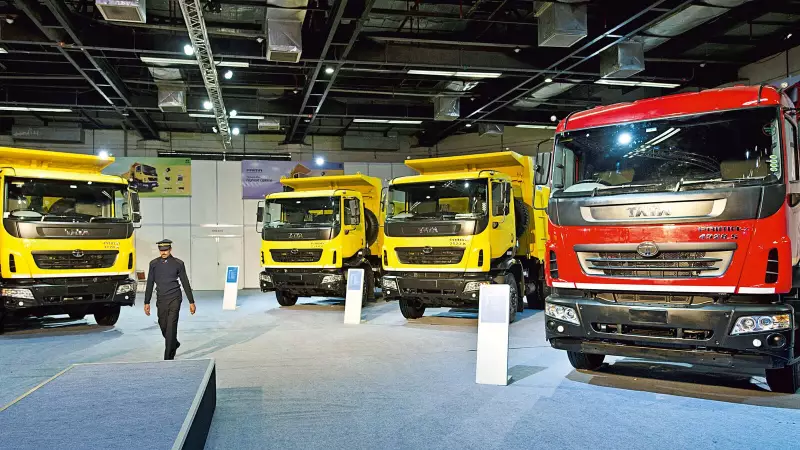
In a landmark corporate restructuring, Tata Motors has successfully completed its demerger process, with shares of the separate commercial vehicles entity now appearing in investors' demat accounts. This strategic move marks a significant chapter in the automotive giant's evolution, creating two distinct investment opportunities from what was once a unified entity.
The Demerger Breakdown: What Exactly Happened?
Tata Motors has executed a vertical split, separating its commercial vehicles (CV) business from the passenger vehicles (PV) segment, which includes the prestigious Jaguar Land Rover operations. Shareholders who held Tata Motors stock before the record date have received new shares of the demerged CV entity in their demat accounts, proportionate to their existing holdings.
The new structure creates:
- Tata Motors PV Business: Focused on passenger vehicles and Jaguar Land Rover
- Tata Motors CV Business: Dedicated to commercial vehicles and related operations
Valuation Dynamics Post-Demerger
Analysts are closely watching how the market will value these two distinct entities. The demerger unlocks hidden value by allowing investors to price each business based on its specific growth prospects, risk profile, and industry dynamics.
"The separation enables pure-play investment opportunities," market experts note. "Investors can now choose exposure based on their view of either the premium passenger vehicle segment or the cyclical commercial vehicles business."
What Should Investors Do Now?
With the shares now in demat accounts, investors face crucial decisions about their portfolio strategy:
- Evaluate Each Business Separately: Assess the growth potential, competitive position, and financial health of both entities independently
- Consider Your Investment Horizon: The CV business may offer different cyclical patterns compared to the PV segment
- Monitor Initial Trading Patterns: Watch how the market prices these entities in the early days of separate trading
- Review Your Asset Allocation: Ensure your portfolio balance aligns with your risk tolerance and investment goals
The Strategic Rationale Behind the Split
Tata Motors' demerger isn't just a financial exercise—it's a strategic masterstroke designed to:
- Enhance operational focus and agility in both segments
- Allow independent capital allocation decisions
- Create sharper management accountability
- Enable tailored strategies for different market dynamics
Market Reaction and Future Outlook
Early market sentiment suggests positive reception to the demerger, with analysts expecting both entities to attract different investor profiles. The CV business, with its strong market position in India, may appeal to investors seeking domestic industrial exposure, while the PV business offers global luxury brand appeal through JLR.
This corporate restructuring represents one of the most significant developments in India's automotive sector, potentially setting a precedent for other diversified conglomerates considering similar moves to unlock shareholder value.
As both entities begin their independent journeys, all eyes will be on their quarterly performance, strategic initiatives, and ability to capitalize on their newly gained operational freedom in the competitive automotive landscape.





